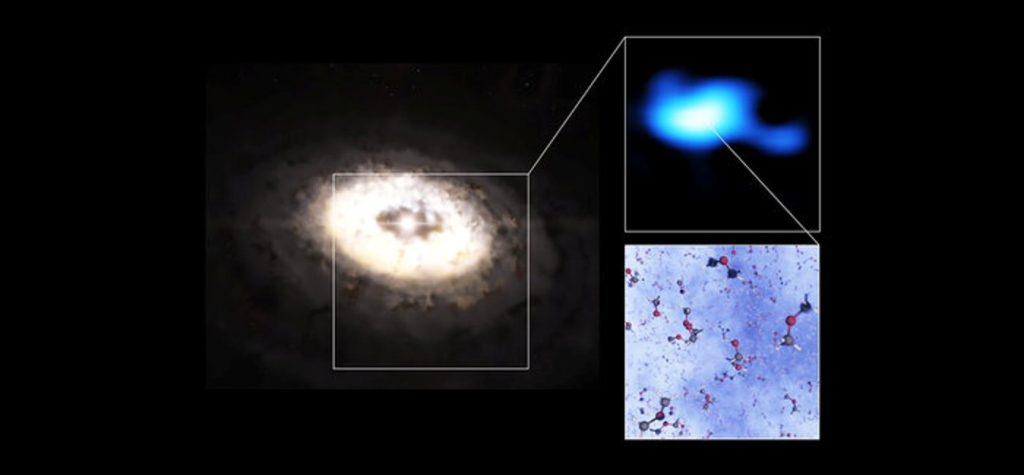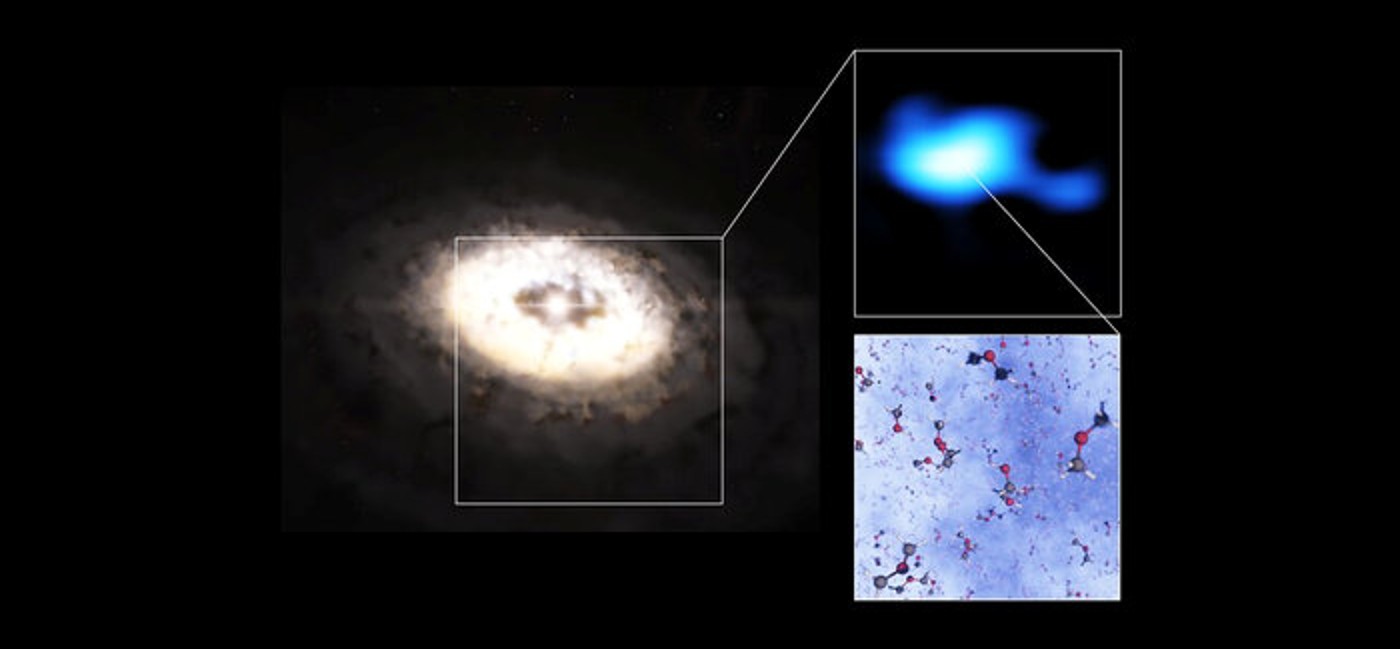
Planet forming gas, dust, and ice 444 light years away contains a complex organic molecule that could lead to life, according to new research.
The chemical, known as dimethyl ether, is a key building block of life—turning into prebiotics such as amino acids and sugars..
Co-author Dr. Nienke van der Marel, of Leiden Observatory, said, “Dimethyl ether is the largest molecule ever detected in a planet-forming disc.
“It has been seen before in the cold clouds in which stars are forming, but not yet in an environment where planets are forming.
“This means that such molecules may end up on the planets directly as they form.
“The molecule is particularly important as it is a ‘complex organic molecule’, which is the starting point of large molecules that are the building blocks of life through further chemical reactions.”
CHECK OUT: Mysterious Object Unlike Anything Astronomers Have Seen Before Discovered
It was found around the young star IRS 48, located in the southern sky in the constellation Ophiuchus.
It has been the focus of numerous studies because the disc contains an asymmetric, cashew-nut-shaped “dust trap.”
Large numbers of millimeter-sized icy particles clump together and grow into comets, asteroids, and even planets.
They form within the extremely cold environments before the stars themselves are born.
Atoms and simple molecules like carbon monoxide undergo chemical reactions to produce more complex molecules.
The beginnings of life
Lead author Nashanty Brunken, a master’s student, said, “From these results, we can learn more about the origin of life on our planet and therefore get a better idea of the potential for life in other planetary systems.
“It is very exciting to see how these findings fit into the bigger picture.”
Dimethyl has been commonly detected in star-forming clouds, but never before in a proto-planetary disc.
Fledgling worlds can arise out of the rotating balls that develop around a newborn sun.
LOOK: What Wintering Squirrels Can Teach Astronauts
With nine atoms, the chemical is the largest complex organic molecule (COM) identified in such a disc to date.
It sheds fresh light in how they are incorporated into planets, including our own.
The Dutch team used ALMA (Atacama Large Millimetre/submillimetre Array) in Chile, which is the largest radio telescope in the world.
Co-author Dr Alice Booth said, “It is really exciting to finally detect these larger molecules in discs. For a while, we thought it might not be possible to observe them.”
They only become detectable when heating from IRS 48 causes the ice to turn from a solid to a gas, freeing them.
RELATED: Even Dying Stars Can Still Give Birth to Planets, Scientists Discover
Explained Dr Booth, “What makes this even more exciting is that we now know these larger complex molecules are available to feed forming planets in the disc.
“This was not known before as in most systems these molecules are hidden in the ice.”
The study, published in Astronomy & Astrophysics, suggests other COMs may also be lurking.
Added Dr van der Marel, “We are incredibly pleased that we can now start to follow the entire journey of these complex molecules from the clouds that form stars, to planet-forming discs, and to comets.
MORE: Astronomers Discover a New Type of Star Covered in Helium Burning Ashes
“Hopefully with more observations we can get a step closer to understanding the origin of prebiotic molecules in our own solar system.”
It improves the chances life has evolved elsewhere, and could be widespread.
The James Webb Space Telescope, which launched on Christmas Day, can analyze atmospheres of planets floating around the galaxy in unprecedented detail.
It has been hailed as a game-changer in the search for extra-terrestrials. The most promising, known as K2-18b, is 110 light years away.
SHARE This Far Out Story on Social Media…




















